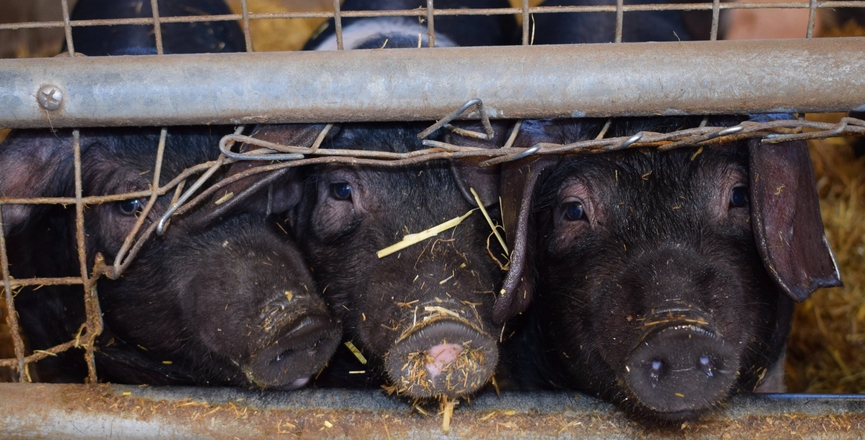Many people — meat-eaters included — object to the factory farm practice of confining pigs for virtually their entire lives to metal cages so small they can’t even turn around.
That’s why the Canadian pork industry, sensitive about its public image, decided to eliminate the practice — a move hailed by Canada’s Humane Society as “a watershed moment for farm animals in Canada.”
This led to a rare round of positive coverage for the beleaguered industry, with the media reporting that the move would please Canadian consumers and bring Canadian animal welfare practices in line with more advanced European standards.
All that happened back in 2014. Yet, six years later, millions of pigs in Canada continue to spend their lives locked in these narrow cages — because the ban doesn’t actually come into effect until 2024.
In fact, that leisurely 10-year phase-in period seems about to get longer. The pork industry has decided it needs more time and has indicated its desire to grant itself a further five-year extension.
This is possible because the industry is allowed to make its own rules governing its animals. But it means sows in Canada will continue their lifelong captivity until 2029 — a full 15 years after it was announced the practice was to be ended, due to concerns about animal welfare.
Factory farms exist in a realm largely beyond public scrutiny or control, with almost nothing to protect the animals from miserable conditions imposed by an industry extracting maximum profit from the animals it harvests.
And Doug Ford’s government just made it easier for the industry to shield its operations from public view, passing legislation last month aimed at cracking down on trespassing activists and journalists who often work undercover on industrial farms in order to take photos and videos.
Such videos, which abound on social media, have helped generate public alarm about the plight of farm animals. One undercover video, aired last month on CTV’s national investigative program W5, included graphic footage of adult pigs being hit with heavy objects and baby pigs squealing and squirming in pain as workers cut off their tails and castrate them.
Unlike Europe, Australia and New Zealand, Canada’s laws governing animal welfare have barely evolved over the last century, even though the open pastures of traditional family farms have largely been replaced by the confining cages of today’s industrial farms.
Instead of updating our animal welfare laws, Ottawa has allowed the industry to draw up its own “codes of practice,” which are effectively guidelines with no clear penalties for lack of compliance.
The writing of the codes is overseen by the National Farm Animal Care Council — a private body, funded by government, but dominated by the meat industry and other “stakeholders” in the food supply chain.
The council allows only minimal input from animal welfare groups. Indeed, any group that opposes eating animals is automatically excluded from sitting on its committees.
Once the committees have drawn up their codes, they invite public feedback. But, as University of Alberta law professor Peter Sankoff observes, there’s no evidence the public feedback has any impact, beyond providing the whole process with “a veneer of public legitimacy.”
Of course, one set of “stakeholders” left entirely out of the process are the animals themselves. And while they can’t talk, they do feel.
As renowned anthropologist Jane Goodall notes: “Farm animals feel pleasure and sadness, excitement and resentment, depression, fear and pain.”
The intensity of animal emotions has been captured on videos of rescued farm animals experiencing their first taste of freedom. They run, romp and play — even enormous adult pigs — and certainly appear to be experiencing something akin to joy.
Of course, any dog owner can confirm that animals feel emotions. And any dog owner would gasp at the thought of their dog trapped in a confining cage, 24 hours a day, unable to even turn around.
But the factory farm industry is counting on us not making the connection. And the best way to ensure that, as Doug Ford knows, is to prevent us from seeing photos of locked-up pigs looking every bit as sad and scared as our own dogs would be in those cages.
Linda McQuaig is a journalist and author of The Sport & Prey of Capitalists: How the Rich are Stealing Canada’s Public Wealth. This column originally appeared in the Toronto Star.
Image: Suzanne Tucker/Unsplash



